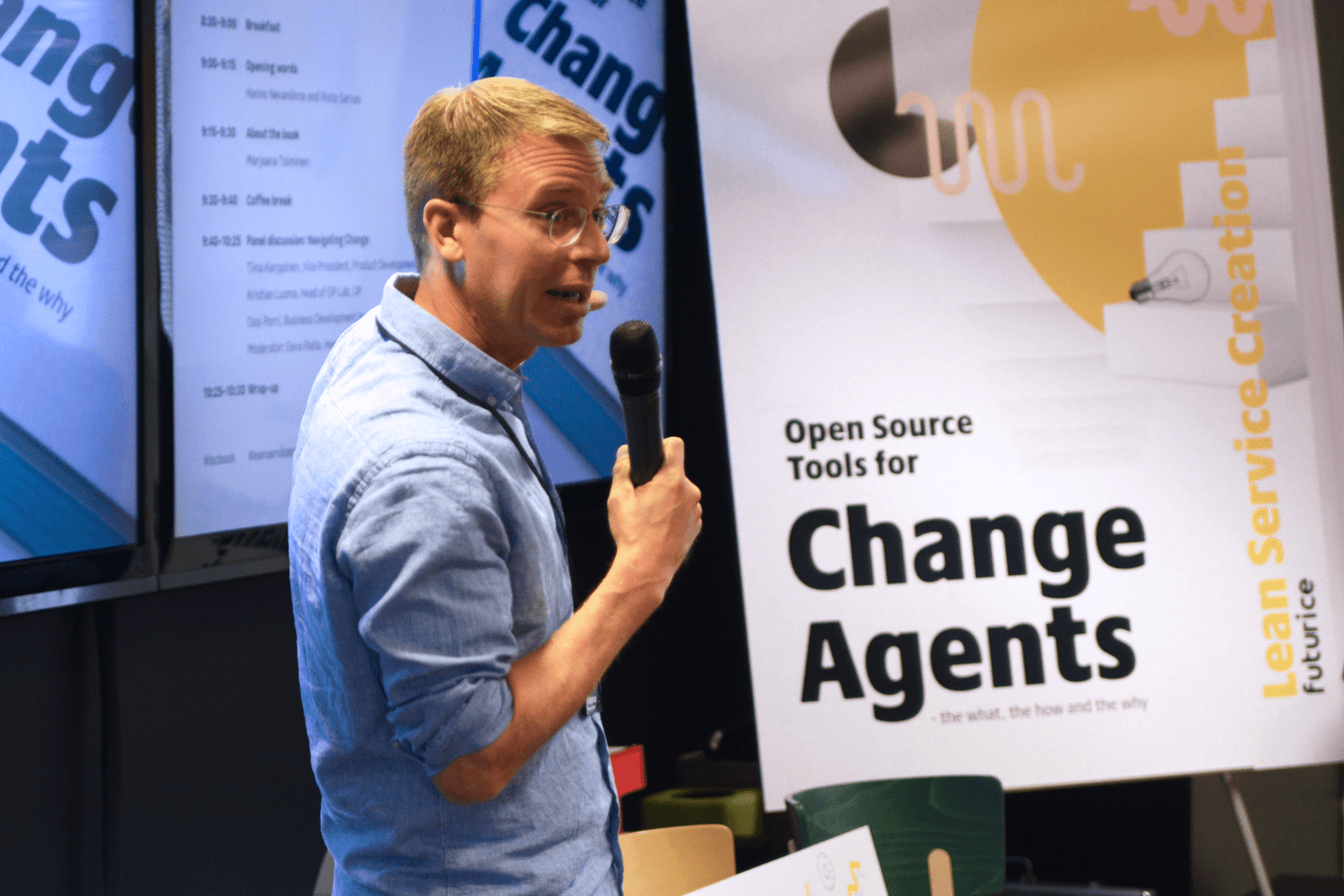Change is simple – give a little to get a lot back
If you repeat the same answer again and again, is it the truth?

Five years ago, Futurice was nominated Europe's best workplace for the second time in a row. I ended up talking about our culture in over 200 seminars and events. I was asked the same question over and over again: "What should we do to have a culture similar to yours?”
Each and every time I gave the same answer: "Change your owners, your board of directors, CEO, senior management, middle management and a good part of your staff."
After that, our clients started asking us to help them change their culture in practice. When working with our clients and their employees, it soon dawned on me that my answer to the original question had been ignorant, arrogant, and only partially true. Change is actually quite easy if you just give people new tools to do their work better and in a more meaningful way. New ways of working will help them evolve their thinking as well.
You don’t need to start from scratch in order to have an innovative work culture. You can also build on top of your organization’s existing culture; people can change, and more often than not, they want to change. You, as their change agent, simply need to create an environment that supports this change.
No pain, no gain
Contrary to the popular assumption, a culture where people get to be close to their clients, work in a real team, have clear goals and can decide on their own how to reach them, and are able to constantly validate and update their assumptions, is in face appealing to most people – not just Gen Xers. At this point I have been actively working on culture for more than a decade, and have yet to witness any correlation between age and desire or capability to learn a new working culture.
All that an organization needs is a positive mindset towards change, and tools that support new ways of thinking and working. And most importantly: management needs to give in order to get back later. They need to transfer part of their power to their teams and give them the ability to make their own decisions. It typically hurts at first, but pays off later. It will take some time, but management will eventually get a new, more responsible and meaningful role.
As a “change agent” or “consultant,” I believe that my job is to make myself useless as fast as possible. That is also the reason why we – Risto Sarvas, Marjaana Toiminen and I – have put together some important lessons learned along the way, and included them in our new book, Open Source Tools for Change Agents. The book combines the Lean Service Creation tools as well as our customers’ experiences on utilizing them to accelerate culture change.

It certainly doesn't have all the answers you may need, but it does contain a good selection of essential learnings for a successful culture transformation. I know my endorsement is severely biased, but still – read the book. Although before you rush to do that, please be aware that simply learning the book by heart won't change a damn thing. In order to set the actual change in motion, you must practise, practise, and then practise some more.
Open Source Tools for Change Agents is available as a Kindle ebook on Amazon.
Print copies are available in the Nordics through Adlibris:
If you would like to order a larger batch of books for your organization, please get in touch with the team behind the Lean Service Creation methodology at lsc@futurice.com and ask about special bulk order pricing.
 Hanno NevanlinnaDirector of Culture, Service Innovation Coach
Hanno NevanlinnaDirector of Culture, Service Innovation Coach